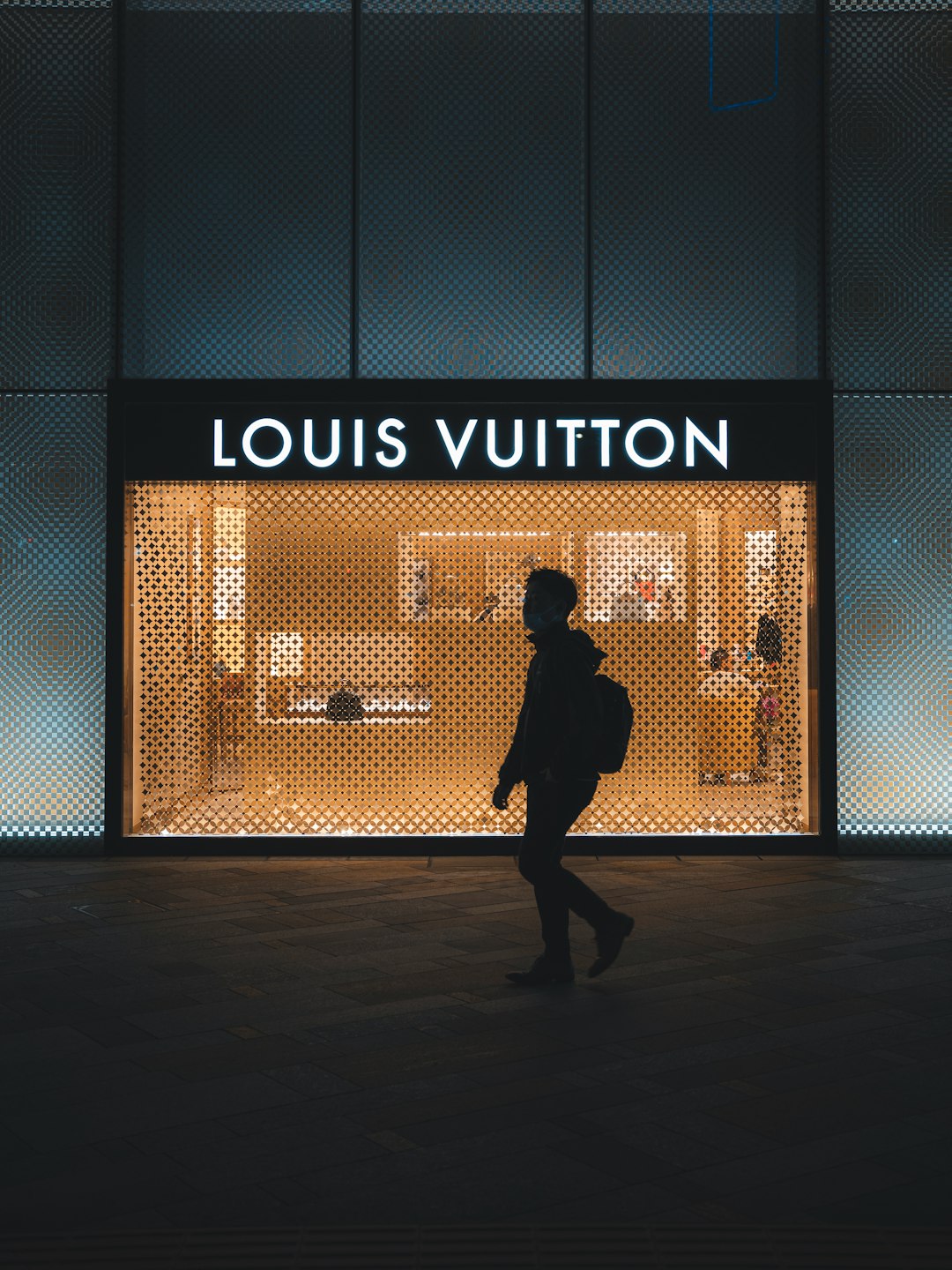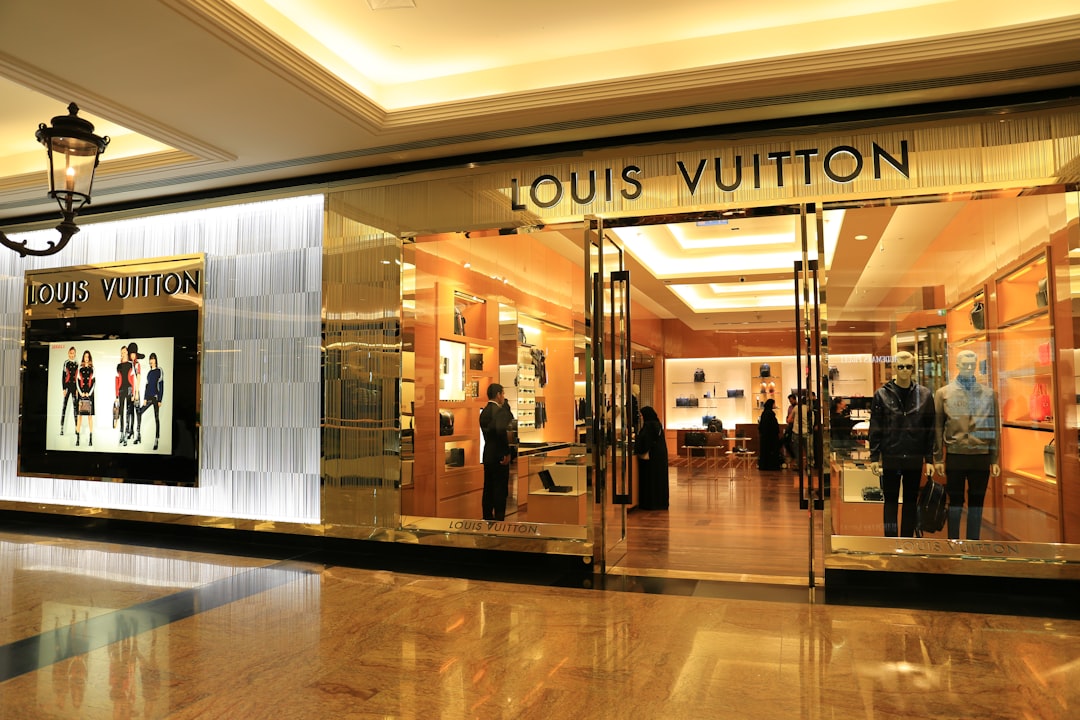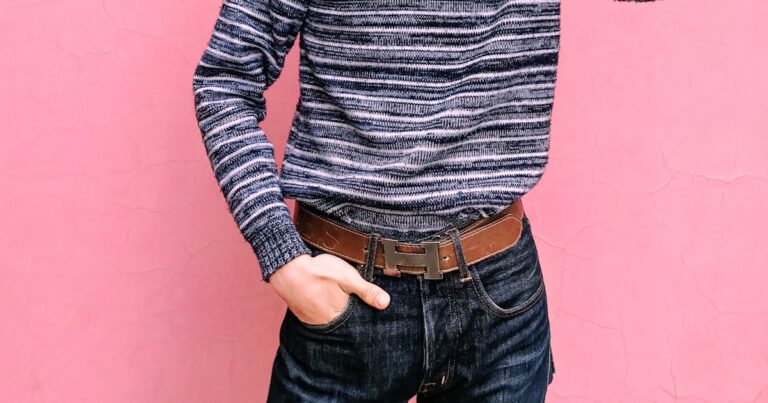Support our educational content for free when you purchase through links on our site. Learn more
What Is the Top Clothing Brand in the World? Discover the Top 15 (2025) 👗
Ever wondered which clothing brand truly rules the global fashion scene? Is it the luxury allure of Louis Vuitton, the athletic dominance of Nike, or the fast-fashion frenzy of Zara? With the fashion industry worth a staggering $1.84 trillion worldwide, picking the top brand is like choosing a favorite star in a galaxy of style icons. But here’s the twist: the “top” brand depends on what you value most — innovation, heritage, sustainability, or cultural impact.
In this article, we peel back the layers to reveal the Top 15 clothing brands in the world for 2025, dissecting what makes each one a powerhouse. From the craftsmanship of Hermès to the streetwear cult status of Supreme, we’ll help you navigate this dazzling fashion universe and find the brand that deserves your wardrobe’s spotlight.
Key Takeaways
- Top clothing brands excel across multiple dimensions: brand value, innovation, cultural influence, and sustainability.
- Nike, Louis Vuitton, and Chanel consistently lead in global brand value and consumer loyalty.
- Fast fashion giants like Zara and H&M dominate accessibility and trend responsiveness but face sustainability challenges.
- Sustainability is a growing priority, with brands like Patagonia setting new standards.
- Digital presence and e-commerce are crucial for modern brand supremacy.
- The “top” brand varies by personal style, budget, and values — there’s no one-size-fits-all winner.
👉 Shop the top brands:
- Nike Athletic Clothing: Amazon | Nike Official
- Luxury Fashion (Louis Vuitton, Gucci): Louis Vuitton Official | Gucci Official
- Fast Fashion (Zara, H&M): Zara Official | H&M Official
- Sustainable Apparel (Patagonia): Patagonia Official
Ready to discover which brand truly tops the charts? Let’s dive in!
Table of Contents
- ⚡️ Quick Tips and Facts: Unpacking the Global Apparel Industry
- 🕰️ The Ever-Evolving Landscape of Global Fashion: A Historical Perspective on Brand Dominance
- 🧐 Defining “Top”: What Makes a Clothing Brand Truly World-Class?
- 🏆 The Contenders: Our Deep Dive into the World’s Most Influential Clothing Brands
- Nike: The Undisputed Sportswear Juggernaut
- Louis Vuitton: The Epitome of Luxury and Heritage
- Chanel: Timeless Elegance and Enduring Influence
- Adidas: Global Athletic Innovation and Style
- Zara: The Fast Fashion Phenomenon and Trendsetter
- Gucci: Italian Opulence Meets Modern Street Style
- Hermès: Craftsmanship, Exclusivity, and Investment Pieces
- H&M: Affordable Fashion and Global Reach
- Uniqlo: Everyday Essentials and Innovative Fabrics
- Ralph Lauren: American Classicism and Lifestyle Branding
- Levi’s: The Enduring Icon of Denim Culture
- Patagonia: Sustainability, Performance, and Purpose
- Dior: Haute Couture, Artistry, and Global Glamour
- Balenciaga: Avant-Garde Design and Cultural Provocation
- Supreme: Streetwear’s Reigning Cult Brand
- 📊 Beyond the Hype: Key Factors Shaping Global Brand Dominance in Apparel
- 🌐 The Impact of Digitalization and E-commerce on Brand Supremacy in Fashion
- 🌱 Sustainability and Ethical Practices: The New Imperatives for Top Clothing Brands
- 💖 Consumer Loyalty and Brand Perception: The Ultimate Verdict on Apparel Excellence
- 🌍 Regional Powerhouses: Brands Dominating Specific Markets and Cultural Niches
- 🔮 The Future of Fashion: What’s Next for Global Clothing Brands and the Industry?
- ⚖️ Our Verdict: Is There One “Top” Clothing Brand in the World?
- ✨ Conclusion: Navigating the World of Elite Apparel and Your Personal Style
- 🔗 Recommended Links: Dive Deeper into Fashion’s Elite
- ❓ FAQ: Your Burning Questions About Top Clothing Brands Answered
- 📚 Reference Links: Our Sources for Global Fashion Insights
Quick Tips and Facts: Unpacking the Global Apparel Industry
Before we dive headfirst into the dazzling world of top clothing brands, let’s set the stage with some quick facts and tips that will keep you ahead of the fashion curve. Whether you’re a style aficionado or just curious about what makes a brand the top dog, these nuggets will sharpen your perspective.
- The global apparel industry is a colossal $1.84 trillion market, contributing roughly 16% of the world’s GDP. (Source: UniformMarket)
- Brand value and market cap are two different beasts: a brand can be incredibly valuable in consumer perception but might not top revenue charts.
- The term “top clothing brand” can mean different things: highest revenue, strongest brand loyalty, most innovative design, or even sustainability leadership.
- Nike, Louis Vuitton, and Chanel consistently rank as the top three in brand value globally. (Source: Doofinder)
- Fast fashion giants like Zara and H&M dominate in accessibility and trend adaptation but differ vastly from luxury brands in brand perception.
- Digital transformation and e-commerce have reshaped how brands engage consumers, making online presence a critical factor in brand dominance.
For a comprehensive overview of notable brands, check out our Ultimate List of 150+ Brands A-Z You Need to Know (2025) 🛍️.
Ready for the deep dive? Let’s unravel the story behind the world’s most iconic clothing brands.
The Ever-Evolving Landscape of Global Fashion: A Historical Perspective on Brand Dominance
Fashion is a living, breathing organism — constantly evolving, influenced by culture, technology, and economics. To understand who reigns supreme today, we need to glance back at how the top clothing brands rose to prominence.
From Tailors to Titans
- The luxury fashion houses like Louis Vuitton and Hermès started as specialized artisans — crafting trunks, saddles, and bespoke garments for the elite.
- The sportswear revolution in the 20th century, led by brands like Nike and Adidas, transformed casual wear into a global lifestyle.
- The fast fashion boom of the 2000s, spearheaded by Zara and H&M, democratized runway trends, making style affordable and accessible.
- The rise of streetwear and cultural brands such as Supreme and Off-White reflects a shift toward youth-driven, urban fashion narratives.
Key Milestones
| Era | Brand Highlights | Impact |
|---|---|---|
| Early 1900s | Louis Vuitton, Hermès | Luxury craftsmanship and exclusivity |
| 1960s-1980s | Nike, Adidas | Athletic innovation and mass appeal |
| 1990s-2000s | Zara, H&M | Fast fashion and rapid trend cycles |
| 2010s-Present | Gucci, Supreme, Balenciaga | Luxury meets streetwear and digital savvy |
Fashion history is a rollercoaster, and the brands that adapt fastest often take the crown. But what exactly defines “top” in this fiercely competitive arena? Let’s find out.
Defining Top: What Makes a Clothing Brand Truly World-Class?
When someone asks, “What is the top clothing brand in the world?” the answer isn’t as simple as naming the richest or most famous label. At Popular Brands™, we believe top means a blend of multiple factors:
The Four Pillars of Top Clothing Brands
-
Brand Value & Market Capitalization
How much is the brand worth? Louis Vuitton leads with a brand value north of $32 billion. (Source: UniformMarket) -
Cultural Influence & Consumer Loyalty
Nike’s swoosh is more than a logo — it’s a global symbol of athleticism and style, inspiring fierce loyalty. -
Innovation & Design Excellence
Gucci’s bold designs and Dior’s haute couture artistry push fashion boundaries. -
Sustainability & Ethical Practices
Patagonia and Stella McCartney are pioneers in eco-conscious fashion, increasingly important to consumers.
Why It Matters
- A brand with high revenue but poor consumer perception might not be “top” in hearts and minds.
- Conversely, a cult brand with limited revenue but massive cultural impact can be a “top” brand in influence.
- The digital age demands brands excel in e-commerce and social media engagement.
So, the “top” brand is a multifaceted crown — and we’re here to crown the contenders.
The Contenders: Our Deep Dive into the World’s Most Influential Clothing Brands
Time to roll out the red carpet for the giants of the apparel world. We’ve analyzed brand value, innovation, cultural impact, and consumer feedback to bring you a Top 15 list that covers every corner of the fashion spectrum.
1. Nike: The Undisputed Sportswear Juggernaut
| Aspect | Rating (1-10) |
|---|---|
| Design | 9 |
| Innovation | 10 |
| Brand Loyalty | 10 |
| Sustainability | 7 |
| Global Reach | 10 |
Nike is the titan of athletic clothing, with a brand value of $31.3 billion. Its iconic swoosh is synonymous with performance and style. From Air Jordans to Flyknit technology, Nike blends innovation with cultural relevance.
Why Nike Rocks
- Innovation: Constantly pushing boundaries with tech like React foam and sustainable Flyleather.
- Marketing: Legendary campaigns featuring athletes like Michael Jordan and Serena Williams.
- Global Fan Base: Nike’s presence spans every continent, making it a universal symbol of sport and style.
Drawbacks
- Criticized in the past for labor practices, though recent efforts show improvement.
- Premium pricing can be a barrier for some consumers.
👉 CHECK PRICE on:
2. Louis Vuitton: The Epitome of Luxury and Heritage
| Aspect | Rating (1-10) |
|---|---|
| Design | 10 |
| Craftsmanship | 10 |
| Brand Value | 10 |
| Exclusivity | 9 |
| Innovation | 8 |
Louis Vuitton, part of the LVMH empire, is the gold standard in luxury fashion with a brand value over $32 billion. Its monogram is instantly recognizable worldwide.
What Sets Louis Vuitton Apart
- Heritage: Founded in 1854, its craftsmanship is legendary.
- Product Range: From leather goods to ready-to-wear, LV blends tradition with modernity.
- Exclusivity: Limited editions and collaborations keep the brand aspirational.
Challenges
- High price points limit accessibility.
- Counterfeiting remains a persistent issue.
👉 Shop Louis Vuitton on:
3. Chanel: Timeless Elegance and Enduring Influence
| Aspect | Rating (1-10) |
|---|---|
| Design | 10 |
| Brand Loyalty | 9 |
| Innovation | 8 |
| Cultural Impact | 10 |
Chanel is synonymous with classic elegance, from the little black dress to the iconic Chanel No. 5 fragrance. Its brand value hovers around $19.4 billion.
Highlights
- Visionary Design: Coco Chanel revolutionized women’s fashion.
- Cultural Icon: The brand’s influence extends beyond fashion into art and film.
- Consistent Quality: Timeless pieces that retain value.
Considerations
- Limited product accessibility outside luxury markets.
- Conservative innovation compared to streetwear brands.
👉 Shop Chanel on:
4. Adidas: Global Athletic Innovation and Style
| Aspect | Rating (1-10) |
|---|---|
| Design | 9 |
| Innovation | 9 |
| Brand Loyalty | 9 |
| Sustainability | 8 |
| Global Reach | 9 |
Adidas is Nike’s fiercest competitor, with a brand value of $15.7 billion. Known for collaborations with Kanye West (Yeezy) and Pharrell Williams, Adidas blends sport and streetwear effortlessly.
Strengths
- Collaborations: Celebrity partnerships boost cultural cachet.
- Sustainability: Initiatives like Parley for the Oceans.
- Product Range: From performance gear to lifestyle sneakers.
Weaknesses
- Sometimes overshadowed by Nike’s marketing muscle.
- Product pricing can vary widely.
👉 CHECK PRICE on:
5. Zara: The Fast Fashion Phenomenon and Trendsetter
| Aspect | Rating (1-10) |
|---|---|
| Trend Adaptation | 10 |
| Affordability | 9 |
| Global Reach | 10 |
| Sustainability | 6 |
Zara, part of Inditex, is the fast fashion powerhouse that brought runway trends to the masses at breakneck speed. With a brand value of $11 billion, Zara’s model is all about rapid production and trend responsiveness.
What Makes Zara Tick
- Speed: Designs move from concept to store in weeks.
- Accessibility: Affordable pricing for trend-conscious shoppers.
- Global Footprint: Stores in over 90 countries.
Downsides
- Sustainability concerns due to fast fashion’s environmental impact.
- Quality can be inconsistent.
👉 Shop Zara on:
6. Gucci: Italian Opulence Meets Modern Street Style
| Aspect | Rating (1-10) |
|---|---|
| Design | 10 |
| Brand Loyalty | 9 |
| Innovation | 8 |
| Cultural Impact | 9 |
Gucci blends luxury craftsmanship with bold, modern designs. Under creative director Alessandro Michele, Gucci has become a cultural phenomenon with a brand value of $17.8 billion.
Highlights
- Bold Aesthetic: Eclectic, maximalist designs that stand out.
- Strong Digital Presence: Engages younger consumers effectively.
- Collaborations: Partnerships with artists and celebrities.
Challenges
- High price points.
- Some polarizing design choices.
👉 Shop Gucci on:
7. Hermès: Craftsmanship, Exclusivity, and Investment Pieces
| Aspect | Rating (1-10) |
|---|---|
| Craftsmanship | 10 |
| Exclusivity | 10 |
| Brand Value | 9 |
| Innovation | 7 |
Hermès is the quintessential luxury brand known for impeccable leather goods and exclusivity, with a brand value around $14.2 billion.
Why Hermès Excels
- Handcrafted Excellence: Each product is a masterpiece.
- Investment Value: Bags like the Birkin appreciate over time.
- Limited Production: Scarcity drives desirability.
Drawbacks
- Extremely high price tags.
- Limited accessibility.
👉 Shop Hermès on:
8. H&M: Affordable Fashion and Global Reach
| Aspect | Rating (1-10) |
|---|---|
| Affordability | 10 |
| Trend Adaptation | 8 |
| Global Reach | 9 |
| Sustainability | 6 |
H&M is a titan of affordable fast fashion, with a global footprint rivaling Zara. It appeals to budget-conscious shoppers seeking trendy apparel.
Strengths
- Wide product range.
- Frequent collaborations with designers.
- Expanding sustainability initiatives.
Weaknesses
- Fast fashion’s environmental impact.
- Quality varies widely.
👉 Shop H&M on:
9. Uniqlo: Everyday Essentials and Innovative Fabrics
| Aspect | Rating (1-10) |
|---|---|
| Quality | 8 |
| Innovation | 9 |
| Affordability | 8 |
| Global Reach | 8 |
Uniqlo is known for functional, minimalist apparel with innovative fabrics like HeatTech and AIRism, making it a favorite for everyday wear.
Highlights
- Focus on basics with technical enhancements.
- Affordable pricing with consistent quality.
- Expansion into global markets.
Limitations
- Less focus on high fashion or trendiness.
- Limited luxury appeal.
👉 Shop Uniqlo on:
10. Ralph Lauren: American Classicism and Lifestyle Branding
| Aspect | Rating (1-10) |
|---|---|
| Brand Loyalty | 9 |
| Design | 8 |
| Cultural Impact | 8 |
| Innovation | 7 |
Ralph Lauren epitomizes classic American style, blending preppy aesthetics with lifestyle branding.
Strengths
- Strong brand identity.
- Diverse product lines from casual to formal.
- Iconic polo shirts.
Weaknesses
- Less cutting-edge than some competitors.
- Aging brand perception among younger consumers.
👉 Shop Ralph Lauren on:
11. Levi’s: The Enduring Icon of Denim Culture
| Aspect | Rating (1-10) |
|---|---|
| Heritage | 10 |
| Quality | 8 |
| Brand Loyalty | 9 |
| Innovation | 6 |
Levi’s is the denim pioneer with over 150 years of history, synonymous with American casual wear.
Highlights
- Timeless denim styles.
- Strong cultural resonance.
- Sustainable denim initiatives underway.
Drawbacks
- Limited diversification beyond denim.
- Competition from newer denim brands.
👉 Shop Levi’s on:
12. Patagonia: Sustainability, Performance, and Purpose
| Aspect | Rating (1-10) |
|---|---|
| Sustainability | 10 |
| Quality | 9 |
| Brand Loyalty | 9 |
| Innovation | 8 |
Patagonia is the gold standard in sustainable outdoor apparel, revered for environmental activism and durable products.
Why Patagonia Stands Out
- Transparent supply chain.
- Commitment to environmental causes.
- High-performance gear.
Challenges
- Premium pricing.
- Niche market focus.
👉 Shop Patagonia on:
13. Dior: Haute Couture, Artistry, and Global Glamour
| Aspect | Rating (1-10) |
|---|---|
| Design | 10 |
| Brand Value | 9 |
| Innovation | 8 |
| Cultural Impact | 9 |
Dior is a beacon of haute couture and elegance, with a brand value of $13.2 billion.
Highlights
- Iconic haute couture collections.
- Strong presence in fragrances and cosmetics.
- Artistic runway shows.
Considerations
- High price points.
- Limited accessibility.
👉 Shop Dior on:
14. Balenciaga: Avant-Garde Design and Cultural Provocation
| Aspect | Rating (1-10) |
|---|---|
| Innovation | 10 |
| Design | 9 |
| Cultural Impact | 8 |
Balenciaga is the avant-garde disruptor in luxury fashion, known for bold, sometimes controversial designs.
Strengths
- Cutting-edge runway shows.
- Strong streetwear influence.
- Celebrity endorsements.
Weaknesses
- Polarizing designs.
- High price points.
👉 Shop Balenciaga on:
15. Supreme: Streetwear’s Reigning Cult Brand
| Aspect | Rating (1-10) |
|---|---|
| Cultural Impact | 10 |
| Brand Loyalty | 10 |
| Innovation | 7 |
| Accessibility | 3 |
Supreme is the king of streetwear cult brands, known for limited drops and massive hype.
Why Supreme Rules
- Scarcity drives demand.
- Collaborations with luxury and sports brands.
- Youth culture icon.
Drawbacks
- Extremely limited availability.
- High resale prices.
👉 Shop Supreme on:
Beyond the Hype: Key Factors Shaping Global Brand Dominance in Apparel
What really separates the top brands from the rest? Here’s a breakdown of the key factors that shape dominance:
- Innovation: From fabric technology to design, brands that innovate stay relevant.
- Marketing & Storytelling: Emotional connection through storytelling builds loyalty.
- Global Distribution: Accessibility across markets fuels growth.
- Sustainability: Increasingly, ethical practices influence consumer choices.
- Digital Presence: Social media and e-commerce are non-negotiable.
Brands like Nike and Gucci excel because they master these factors simultaneously.
The Impact of Digitalization and E-commerce on Brand Supremacy in Fashion
The digital revolution has rewritten the rules of fashion. Brands that embraced e-commerce early, like Zara and Nike, gained a massive edge.
- Social Media Influence: Instagram and TikTok shape trends overnight.
- Direct-to-Consumer Models: Brands cut out middlemen, increasing margins and control.
- Virtual Try-Ons & AI: Enhancing customer experience online.
- Sustainability Transparency: Digital tools allow brands to showcase ethical practices.
If a brand isn’t digitally savvy, it risks becoming yesterday’s news.
Sustainability and Ethical Practices: The New Imperatives for Top Clothing Brands
Consumers are demanding more than style — they want responsible fashion.
- Brands like Patagonia and Stella McCartney lead with eco-friendly materials and transparent supply chains.
- Fast fashion brands like Zara and H&M are investing in sustainable lines but face criticism for the overall model.
- Luxury brands are integrating sustainability without compromising exclusivity.
Sustainability is no longer optional; it’s a core pillar of brand leadership.
Consumer Loyalty and Brand Perception: The Ultimate Verdict on Apparel Excellence
At the end of the day, consumer loyalty is the true test of a top brand.
- Nike’s swoosh inspires devotion across generations.
- Louis Vuitton’s exclusivity creates aspirational desire.
- Streetwear brands like Supreme foster cult-like followings.
Loyalty is built on consistent quality, emotional connection, and cultural relevance.
Regional Powerhouses: Brands Dominating Specific Markets and Cultural Niches
Not all top brands are global giants. Some dominate regionally or within niches:
- Uniqlo commands Asia with its functional basics.
- Patagonia leads in outdoor and sustainability-focused markets.
- Supreme rules urban streetwear globally but remains niche.
- Inditex’s other brands like Bershka and Massimo Dutti cater to specific demographics.
Understanding these niches helps decode the complex fashion ecosystem.
The Future of Fashion: What’s Next for Global Clothing Brands and the Industry?
Looking ahead, the fashion industry is poised for exciting shifts:
- Tech Integration: Smart fabrics, AR shopping, and AI design.
- Circular Fashion: Brands adopting resale, rental, and recycling models.
- Inclusivity: Expanding size ranges and diverse representation.
- Localism: Consumers supporting local artisans and smaller brands.
The “top clothing brand” of tomorrow might be one that blends innovation, ethics, and community like never before.
Our Verdict: Is There One “Top” Clothing Brand in the World?
After our deep dive, here’s the scoop: There is no single “top” brand that fits all criteria perfectly. Instead, the top brand depends on what you value most:
- For luxury and heritage: Louis Vuitton and Hermès reign supreme.
- For athletic innovation and mass appeal: Nike and Adidas lead.
- For fast fashion accessibility: Zara and H&M dominate.
- For sustainability and purpose: Patagonia sets the standard.
- For cultural influence and streetwear: Supreme and Gucci shine.
Your personal style, budget, and values will guide your choice. But one thing’s for sure — the world of top clothing brands is as dynamic and exciting as ever.
Ready to explore more about your favorite brands? Check out our Ultimate List of 150+ Brands A-Z You Need to Know (2025) 🛍️ for the full scoop!
Conclusion: Navigating the World of Elite Apparel and Your Personal Style

So, what’s the final word on the top clothing brand in the world? As we uncovered, the answer isn’t a one-size-fits-all crown but a vibrant tapestry woven from heritage, innovation, cultural impact, and sustainability. Whether you gravitate toward the athletic prowess of Nike, the timeless luxury of Louis Vuitton, the trend-savvy speed of Zara, or the eco-conscious ethos of Patagonia, each brand offers a unique flavor of excellence.
Here’s a quick recap of the positives and negatives across the spectrum:
| Brand | Positives | Negatives |
|---|---|---|
| Nike | Cutting-edge innovation, global loyalty | Premium pricing, past labor criticisms |
| Louis Vuitton | Unmatched luxury, heritage, exclusivity | High cost, limited accessibility |
| Zara | Rapid trend adaptation, affordability | Environmental concerns, variable quality |
| Patagonia | Sustainability leader, durable products | Niche market, higher prices |
| Supreme | Cult status, cultural influence | Scarcity, high resale prices |
Our confident recommendation? Choose the brand that aligns with your values and lifestyle. If you want innovation and mass appeal, Nike and Adidas are unbeatable. For luxury and timelessness, Louis Vuitton and Chanel remain iconic. If sustainability matters most, Patagonia leads the charge. And if you crave streetwear culture, Supreme and Gucci deliver the hype.
Remember, the “top” brand is the one that makes you feel confident, stylish, and connected. Now that we’ve closed the loop on what makes a brand truly top-tier, it’s your turn to explore and express your unique fashion story.
Recommended Links: Dive Deeper and Shop the Best
Ready to upgrade your wardrobe or gift a fashion lover? Here are direct shopping links to explore the brands we covered, plus some insightful reads to deepen your fashion knowledge.
Shop Top Clothing Brands
- Nike: Amazon | Nike Official Website
- Louis Vuitton: Louis Vuitton Official Website
- Chanel: Chanel Official Website
- Adidas: Amazon | Adidas Official Website
- Zara: Zara Official Website
- Gucci: Gucci Official Website
- Hermès: Hermès Official Website
- H&M: H&M Official Website
- Uniqlo: Uniqlo Official Website
- Ralph Lauren: Ralph Lauren Official Website
- Levi’s: Levi’s Official Website
- Patagonia: Patagonia Official Website
- Dior: Dior Official Website
- Balenciaga: Balenciaga Official Website
- Supreme: Supreme Official Website
Recommended Books on Fashion and Branding
- Deluxe: How Luxury Lost Its Luster by Dana Thomas — Amazon
- The End of Fashion: How Marketing Changed the Clothing Business Forever by Teri Agins — Amazon
- Fashion Brands: Branding Style from Armani to Zara by Mark Tungate — Amazon
FAQ: Your Burning Questions About Top Clothing Brands Answered

What are the most popular luxury clothing brands?
The most popular luxury brands include Louis Vuitton, Chanel, Hermès, Gucci, and Dior. These brands are celebrated for their heritage, craftsmanship, exclusivity, and cultural influence. Louis Vuitton leads in brand value and revenue, while Chanel and Hermès are synonymous with timeless elegance. Gucci has surged in popularity with bold, modern designs appealing to younger luxury consumers. (Source: LVMH)
Read more about “The Ultimate List of 150+ Brands A-Z You Need to Know (2025) 🛍️”
Which clothing brand is most preferred by young adults?
Young adults tend to prefer brands that blend style, cultural relevance, and accessibility. Nike, Adidas, Gucci, and Supreme are top picks. Nike and Adidas dominate athletic and casual wear, while Gucci and Supreme capture streetwear and luxury crossover appeal. Fast fashion brands like Zara and H&M also attract young shoppers for trendy, affordable options. Digital presence and influencer collaborations heavily influence these preferences.
What are the top 5 fashion brands in the world?
According to brand value and influence, the top 5 are:
- Nike — Athletic innovation and global reach
- Louis Vuitton — Luxury craftsmanship and heritage
- Chanel — Timeless elegance and iconic design
- Gucci — Bold luxury and streetwear fusion
- Adidas — Sportswear innovation and collaborations
These brands excel in marketing, cultural impact, and consumer loyalty. (Source: Doofinder)
Read more about “150+ Famous Brands Clothing You Need to Know in 2025 👗”
How do clothing brands become popular and well-known globally?
Global popularity stems from a combination of:
- Innovation: Unique designs and technology attract attention.
- Marketing: Iconic campaigns and celebrity endorsements build awareness.
- Distribution: Wide availability across markets fuels growth.
- Cultural Relevance: Aligning with social trends and values.
- Quality and Consistency: Delivering products that meet or exceed expectations.
Brands like Nike and Louis Vuitton have mastered these elements, creating lasting global appeal.
Read more about “What Is the World’s Most Powerful Brand? Top 25 Revealed (2025) 🚀”
How important is sustainability in determining the top clothing brands?
Sustainability is increasingly critical. Consumers, especially younger demographics, demand ethical production and eco-friendly materials. Brands like Patagonia lead by example, while luxury houses are integrating sustainable practices to maintain relevance. Fast fashion faces scrutiny but is investing in greener initiatives. Sustainability can influence brand loyalty and market position significantly.
Read more about “Who Is the Largest Clothing Retailer in the US? Top 15 Revealed (2025) 👗”
What role does digital presence play in a clothing brand’s success?
Digital presence is a game-changer. Social media platforms like Instagram and TikTok shape trends and consumer perceptions instantly. E-commerce allows brands to reach global audiences directly. Brands with strong digital strategies, like Gucci and Zara, can rapidly adapt and engage consumers, boosting sales and cultural impact.
Read more about “What Is Nike Ranked in the World? Top 10 Facts You Need to Know (2025) 👟🌍”
Reference Links: Our Sources for Global Fashion Insights
- Doofinder: Top Clothing Brands by Brand Value
- UniformMarket: Biggest Clothing and Apparel Companies Globally
- LVMH Official Website
- Nike Official Website
- Louis Vuitton Official Website
- Chanel Official Website
- Gucci Official Website
- Patagonia Official Website
- Zara Official Website
- Spocket: Top 10 Clothing Brands in the World
Dive into these trusted sources to verify facts and explore further — fashion’s world is vast, and knowledge is your best accessory!




